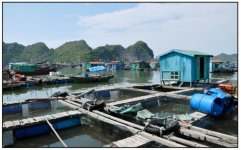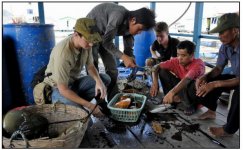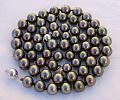Cyril Roger Brossard
Well-known member
- Joined
- Aug 30, 2012
- Messages
- 408
as seen here.
This report forms part of a series of simple yet informative reports that describe field trips undertaken by GIA Field Gemologists in order to obtain specimens from mines producing a variety of gemstones throughout the world.
Concise Field Report
Volume 2 ‐ part 1
Melos and their Pearls in Vietnam
(May‐June 2009)
Vincent Pardieu
GIA Laboratory, Bangkok

Figure 1: A view of Ha Long Bay Vietnam (Photo: V. Pardieu/GIA Laboratory Bangkok, 2009)
Introduction
For many years, while visiting Hanoi, I (VP) enjoy walking in the old town around the Hoan Kiem Lake. There in this part of Hanoi is a small street in which is located a low profile old house. It is a tunnel type house. It starts with a long corridor, something typical in Hanoi old town, leading to a small office. There a lady and her daughter are living and running what looks to be a quiet antique business. However, the reasons behind VP’s regular visits have nothing to do with Vietnamese antiques or with the delicious tea offered graciously by the hosts to their visitors. In fact the lady and her daughter are known to collect and trade in one of the most beautiful and mysterious pearls: melo pearls (Mikkelsen, , Scarratt, 1992, Scarratt, 1994, Traub, 1997, Hurwit, 1998, Traub, et al., 1999, Sciaguato, 2004).
In May 27th 2009, VP and his traveling companions (Jean Baptiste Senoble and Kham Vannaxay (France), Lou Pierre Bryl (Canada), David Bright (USA)) were visiting the melo pearl lady, who again took time to discuss with the group her favorite pearls and showed three interesting pearls including one she obtained recently from a Cat Ba Island fisherman. The pearl was not the largest or the best VP had seen but this time he had some information about its origin.
That origin was interesting as Cat Ba Island (Figure 2) is the largest and the most southern islands of the famous Ha Long Bay, a scenic marine wonderland composed of more than 3000 jungle covered islands (Figure 1): One of the world’s most beautiful and romantic marine landscapes, a wonder celebrated in the movie “Indochine” and a UNESCO World heritage site since 1994. The numerous islands of the bay extending about 150km long to 30km wide from Haiphong to the Chinese border form an incredible limestone maze which was for centuries a natural marine defense for Vietnam: A place to hide and to be hidden, a place of legends and beauty. There the Vietnamese navy hid, attacked and then defeated the Chinese and the Mongols, more recently it was used by the Vietminh in North Vietnam as a place to hide from the French and the Americans.
Now it is a place dedicated to tourism and fishing. Pearl merchants are using its evocative name as a selling argument for melo pearls, but VP being familiar with the bay for many years, had some doubts about the fact that melo pearls could be found in the Bay.
The melo pearls are produced by mysterious orange sea snail, the “melo melo” living on the coasts of South East Asia from Vietnam to Cambodia, Thailand, Malaysia and Burma. Before the 1990’s very little was known or published about them. But one thing was obvious: the snail obviously lives in warm waters and Ha Long Bay, if it could be confirmed as a melo melo rich area would then be probably the snail most northern biotope.
During the May‐June 2009 GIA Laboratory Field Trip to Vietnam, after visiting Yen Bai, Luc Yen, Quy Chau and Quy Hop ruby, sapphire and spinel mining areas (report in preparation), VP and his traveling companions had two spare days before taking the plane to the south in order to visit the southern sapphire deposits. A visit to Cat Ba Island for a short Melo pearl hunt was something much more motivating than waiting in Hanoi.
The Melo expedition:
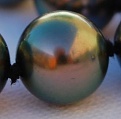
Figure 2: “Vietnam and its islands”: The Melo expedition map with the location of the Vietnamese trawler ports and the melo fishing areas.
The best way to go to Cat Ba from Hanoi is without any doubts to go to Ha Long and take the ferry linking Ha Long to Cat Ba (Figure 3). The cruise is cheap and beautiful. On May 31st the party decided to keep this beautiful cruise for our return and to travel first to Cat Ba through Haiphong, the port of North Vietnam. Our plan was to visit first the fish market to see if we could get some information on Melos. We visited Haiphong fish market without being able to find any Melo but we were told that with no doubts we could find many of them in Cat Ba. We left Haiphong to Cat Ba traveling with ferries and by land with our car.

Figure 3: A ferry sailing between Ha Long and Cat Ba Island. (Photo: V. Pardieu/GIA Laboratory Bangkok, 2009)
Arriving in Cat Ba main town we found a small port dedicated to fishing and tourism (Figure 4). Our first visit was for the Cat Ba fish market (Figure 5) located near the port. We could see a lot of different fish and mollusks, but no Melo snails were on display.
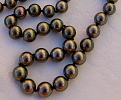
Figure 4: A view of Cat Ba sea front and port. (Photo: V. Pardieu/GIA Laboratory Bangkok, 2009)
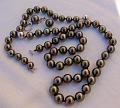
Figure 5: The fish market in Cat Ba (Photo: V. Pardieu/GIA Laboratory Bangkok, 2009)

Figure 6: Melo shell tourist souvenirs in Cat Ba. (Photo: V. Pardieu/GIA Laboratory Bangkok, 2009)
We moved then to the port and walked on the sea front where many restaurants, hotels and tourist shops are located. Immediately we could spot in the different tourist shop several
Melo shells proposed as souvenir for tourists: melo boats, melo horns, melo lamps were common and cheap (Figure 6). Of course many “pearls” were on display but most of them were just cheap imitations. No melo pearls were visible but that was not a surprise.
We found our first living melo while studying the content of the fish tanks located at the entrance of the numerous seafood restaurants on Cat Ba sea side (Figure 8). Only one restaurant was proposing some melo dishes. The restaurant owner who was also the cook was very friendly and proposed to cook the sea snail for the group with green bananas and spices (Figure 9, Figure 10). The lunch was more interesting for the discussion we had with the cook than for the quality of the meal: If the spicy green banana sauce was nice, the melo sea snail turned to be a chewy tasteless meat. We were then not surprised to have found only one restaurant proposing melo snails among the numerous Cat Ba restaurants. The cook was quite surprised of our interest for Melos. We explained to him the reason of our visit and he was even more surprised to learn that melo snails could produce some beautiful pearls. He told us that despite the fact that he spent nearly 50 years here and use to prepare and cook thousands of Melos during his life, he never heard or saw any melo pearls. He was buying regularly Melos among other fish and sea food from fishermen on the port. If we wanted to learn more about the melo, the best way was to visit one of the fishing boats at anchor in the port (Figure 11).
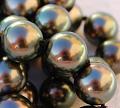
Figure 7: Waitress from one of the Cat Ba restaurants showing a large melo shell. (Photo: V. Pardieu/GIA Laboratory Bangkok, 2009)
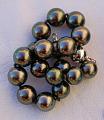
Figure 8: Live melos seen in Cat Ba restaurant fish tank. (Photo: V. Pardieu/GIA Laboratory Bangkok, 2009)
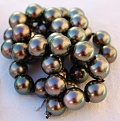
Figure 9: VP selecting a melo for lunch at Cat Ba (Left) and witnessing melo cooking with green bananas (right).(Photo: J.B. Senoble, 2009)

Figure 10: Gemologists Lou Pierre Bryl and Jean Baptiste Senoble “enjoying” a melo lunch in Cat Ba. (Photo: V. Pardieu/GIA Laboratory Bangkok, 2009)
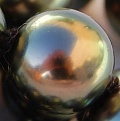
Figure 11: Cat Ba port with local boats and two trawlers from Thanh Hoa. (Photo: V. Pardieu/GIA Laboratory Bangkok, 2009)
After lunch we moved then to the port and hired one of the small rowing boats navigating inside Cat Ba harbor taking people and supplies to and from the boats (Figure 11). Two trawlers from Thanh Hoa were present in the harbor. He visited them and met there some friendly Vietnamese fishermen repairing their fishing nets (Figure 12).
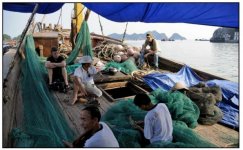
Figure 12: VP’s team visiting one of the Thanh Hoa trawlers and getting information from the fishermen. (Photo: V. Pardieu/GIA Laboratory Bangkok, 2009)
This report forms part of a series of simple yet informative reports that describe field trips undertaken by GIA Field Gemologists in order to obtain specimens from mines producing a variety of gemstones throughout the world.
Concise Field Report
Volume 2 ‐ part 1
Melos and their Pearls in Vietnam
(May‐June 2009)
Vincent Pardieu
GIA Laboratory, Bangkok
Figure 1: A view of Ha Long Bay Vietnam (Photo: V. Pardieu/GIA Laboratory Bangkok, 2009)
Introduction
For many years, while visiting Hanoi, I (VP) enjoy walking in the old town around the Hoan Kiem Lake. There in this part of Hanoi is a small street in which is located a low profile old house. It is a tunnel type house. It starts with a long corridor, something typical in Hanoi old town, leading to a small office. There a lady and her daughter are living and running what looks to be a quiet antique business. However, the reasons behind VP’s regular visits have nothing to do with Vietnamese antiques or with the delicious tea offered graciously by the hosts to their visitors. In fact the lady and her daughter are known to collect and trade in one of the most beautiful and mysterious pearls: melo pearls (Mikkelsen, , Scarratt, 1992, Scarratt, 1994, Traub, 1997, Hurwit, 1998, Traub, et al., 1999, Sciaguato, 2004).
In May 27th 2009, VP and his traveling companions (Jean Baptiste Senoble and Kham Vannaxay (France), Lou Pierre Bryl (Canada), David Bright (USA)) were visiting the melo pearl lady, who again took time to discuss with the group her favorite pearls and showed three interesting pearls including one she obtained recently from a Cat Ba Island fisherman. The pearl was not the largest or the best VP had seen but this time he had some information about its origin.
That origin was interesting as Cat Ba Island (Figure 2) is the largest and the most southern islands of the famous Ha Long Bay, a scenic marine wonderland composed of more than 3000 jungle covered islands (Figure 1): One of the world’s most beautiful and romantic marine landscapes, a wonder celebrated in the movie “Indochine” and a UNESCO World heritage site since 1994. The numerous islands of the bay extending about 150km long to 30km wide from Haiphong to the Chinese border form an incredible limestone maze which was for centuries a natural marine defense for Vietnam: A place to hide and to be hidden, a place of legends and beauty. There the Vietnamese navy hid, attacked and then defeated the Chinese and the Mongols, more recently it was used by the Vietminh in North Vietnam as a place to hide from the French and the Americans.
Now it is a place dedicated to tourism and fishing. Pearl merchants are using its evocative name as a selling argument for melo pearls, but VP being familiar with the bay for many years, had some doubts about the fact that melo pearls could be found in the Bay.
The melo pearls are produced by mysterious orange sea snail, the “melo melo” living on the coasts of South East Asia from Vietnam to Cambodia, Thailand, Malaysia and Burma. Before the 1990’s very little was known or published about them. But one thing was obvious: the snail obviously lives in warm waters and Ha Long Bay, if it could be confirmed as a melo melo rich area would then be probably the snail most northern biotope.
During the May‐June 2009 GIA Laboratory Field Trip to Vietnam, after visiting Yen Bai, Luc Yen, Quy Chau and Quy Hop ruby, sapphire and spinel mining areas (report in preparation), VP and his traveling companions had two spare days before taking the plane to the south in order to visit the southern sapphire deposits. A visit to Cat Ba Island for a short Melo pearl hunt was something much more motivating than waiting in Hanoi.
The Melo expedition:

Figure 2: “Vietnam and its islands”: The Melo expedition map with the location of the Vietnamese trawler ports and the melo fishing areas.
The best way to go to Cat Ba from Hanoi is without any doubts to go to Ha Long and take the ferry linking Ha Long to Cat Ba (Figure 3). The cruise is cheap and beautiful. On May 31st the party decided to keep this beautiful cruise for our return and to travel first to Cat Ba through Haiphong, the port of North Vietnam. Our plan was to visit first the fish market to see if we could get some information on Melos. We visited Haiphong fish market without being able to find any Melo but we were told that with no doubts we could find many of them in Cat Ba. We left Haiphong to Cat Ba traveling with ferries and by land with our car.
Figure 3: A ferry sailing between Ha Long and Cat Ba Island. (Photo: V. Pardieu/GIA Laboratory Bangkok, 2009)
Arriving in Cat Ba main town we found a small port dedicated to fishing and tourism (Figure 4). Our first visit was for the Cat Ba fish market (Figure 5) located near the port. We could see a lot of different fish and mollusks, but no Melo snails were on display.

Figure 4: A view of Cat Ba sea front and port. (Photo: V. Pardieu/GIA Laboratory Bangkok, 2009)

Figure 5: The fish market in Cat Ba (Photo: V. Pardieu/GIA Laboratory Bangkok, 2009)

Figure 6: Melo shell tourist souvenirs in Cat Ba. (Photo: V. Pardieu/GIA Laboratory Bangkok, 2009)
We moved then to the port and walked on the sea front where many restaurants, hotels and tourist shops are located. Immediately we could spot in the different tourist shop several
Melo shells proposed as souvenir for tourists: melo boats, melo horns, melo lamps were common and cheap (Figure 6). Of course many “pearls” were on display but most of them were just cheap imitations. No melo pearls were visible but that was not a surprise.
We found our first living melo while studying the content of the fish tanks located at the entrance of the numerous seafood restaurants on Cat Ba sea side (Figure 8). Only one restaurant was proposing some melo dishes. The restaurant owner who was also the cook was very friendly and proposed to cook the sea snail for the group with green bananas and spices (Figure 9, Figure 10). The lunch was more interesting for the discussion we had with the cook than for the quality of the meal: If the spicy green banana sauce was nice, the melo sea snail turned to be a chewy tasteless meat. We were then not surprised to have found only one restaurant proposing melo snails among the numerous Cat Ba restaurants. The cook was quite surprised of our interest for Melos. We explained to him the reason of our visit and he was even more surprised to learn that melo snails could produce some beautiful pearls. He told us that despite the fact that he spent nearly 50 years here and use to prepare and cook thousands of Melos during his life, he never heard or saw any melo pearls. He was buying regularly Melos among other fish and sea food from fishermen on the port. If we wanted to learn more about the melo, the best way was to visit one of the fishing boats at anchor in the port (Figure 11).

Figure 7: Waitress from one of the Cat Ba restaurants showing a large melo shell. (Photo: V. Pardieu/GIA Laboratory Bangkok, 2009)

Figure 8: Live melos seen in Cat Ba restaurant fish tank. (Photo: V. Pardieu/GIA Laboratory Bangkok, 2009)

Figure 9: VP selecting a melo for lunch at Cat Ba (Left) and witnessing melo cooking with green bananas (right).(Photo: J.B. Senoble, 2009)

Figure 10: Gemologists Lou Pierre Bryl and Jean Baptiste Senoble “enjoying” a melo lunch in Cat Ba. (Photo: V. Pardieu/GIA Laboratory Bangkok, 2009)

Figure 11: Cat Ba port with local boats and two trawlers from Thanh Hoa. (Photo: V. Pardieu/GIA Laboratory Bangkok, 2009)
After lunch we moved then to the port and hired one of the small rowing boats navigating inside Cat Ba harbor taking people and supplies to and from the boats (Figure 11). Two trawlers from Thanh Hoa were present in the harbor. He visited them and met there some friendly Vietnamese fishermen repairing their fishing nets (Figure 12).

Figure 12: VP’s team visiting one of the Thanh Hoa trawlers and getting information from the fishermen. (Photo: V. Pardieu/GIA Laboratory Bangkok, 2009)
Last edited:

